Whale Refractions is a research project currently underway at the Centre for Advanced Study inherit based at the Humboldt-Universität zu Berlin. Questions of addressing ‘heritage at large’ grew out of previous itterations of the Terra Ignota platform while observing oscillatory interrelations between humans and marine mammals and evolutions of cetacean underwater hearing in the historical and geological and climate contexts of the Magallanes Region.
Whale Refractions: Heritage in the Age of Mammals
Material presences, the qualities and values they sustain and spaces within which they seemingly reside, are bound up with complex terrestrial interactions.These circuitries of the extant, conductive of spatial-material operations, in perpetual reconfiguration, continually perform dimensions of their subjects. Observing temporal dimensions of heritage, remedies the object bias of its ‘features’, foregrounding the myriad of forces and contexts structuring its apparent shapes and presumed values. Within these complex dynamics, that cut across human and non-human divides, a cascade of relational interconnections opens into terrestrial heritage at large. Destabilizing notions of static identity, entwining subjects and surrounds, and fragmenting the spaces of the locale across heterogeneous places and times. From the temporal vantage, heritage itself forms the basis of reciprocity, where cherished human traits intermingle with other transferring frameworks of the extant. The diversity of semi-stable forms and structures, inherited or subsumed, at once static and in flux, have much in common with sound’s vibrant manifest.
How do shifting relations between mammals, climate and geology refract through whale sounds? And how are human techniques of hearing underwater conductive of transformations in human-whale relations?
Land-based mammalian abilities of hearing and sounding underwater evolved twice. First, when hoofed ancestors of whales took to the water developing a range of sophisticated acoustic capacities such as the high-frequency echolocating of toothed cetaceans as well as low-frequency, ocean-traversing vocalizations of baleen whales. Early sea voyagers heard whale sounds through hulls of wooden ships, attributing them to mythical underwater creatures. More recently, human ears combining with piezoelectric crystals and magnetic tape, unintentionally recalibrated whale sounds alongside developments in multi-channel directional listening and increased attention to ocean spectra.
Whale Refractions adopts sound as a guide for a journey through shifting relations between human attention to whales, late Gondwana geology, morphogenesis of cetacean auditory systems, Eocene global warming, oxide-based recording methods and piezoelectric undersea surveillance, all interlinked through a particular set of sonic undulations typical to the Age of Mammals.
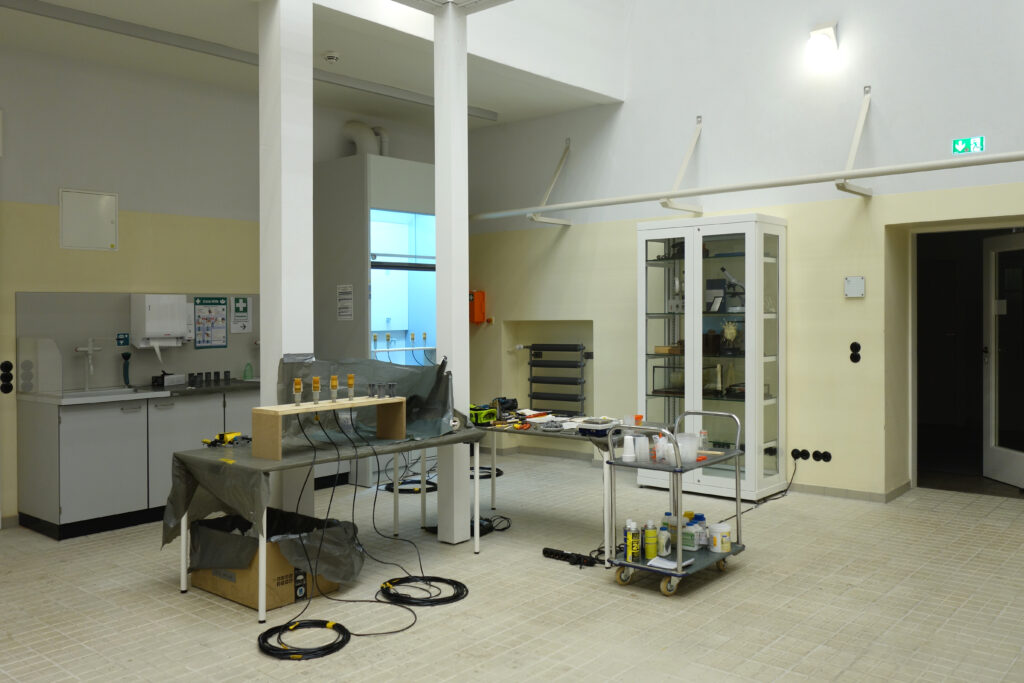
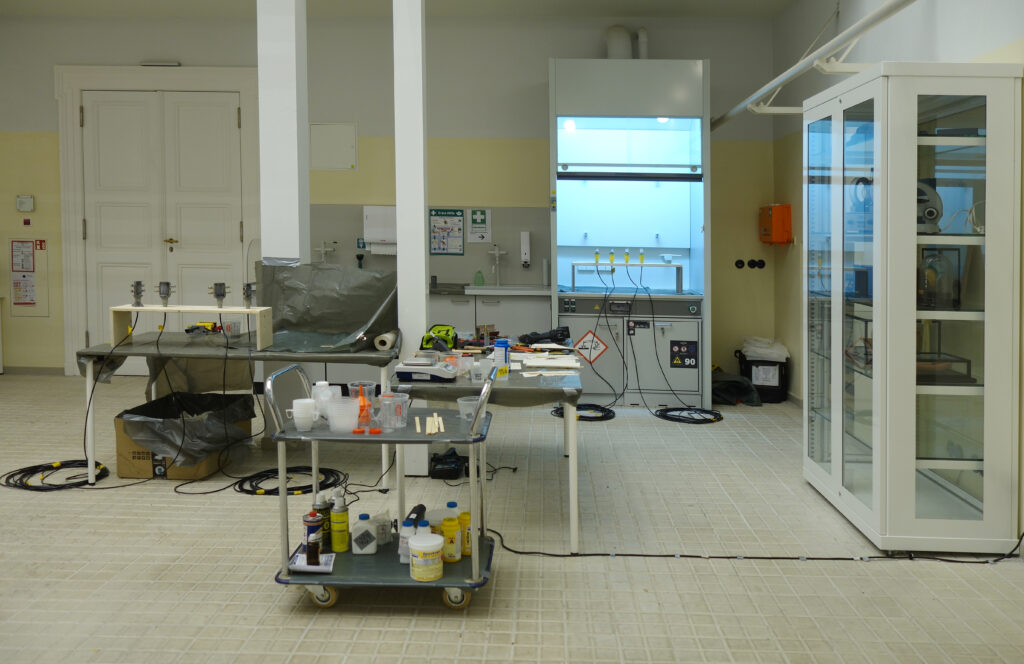
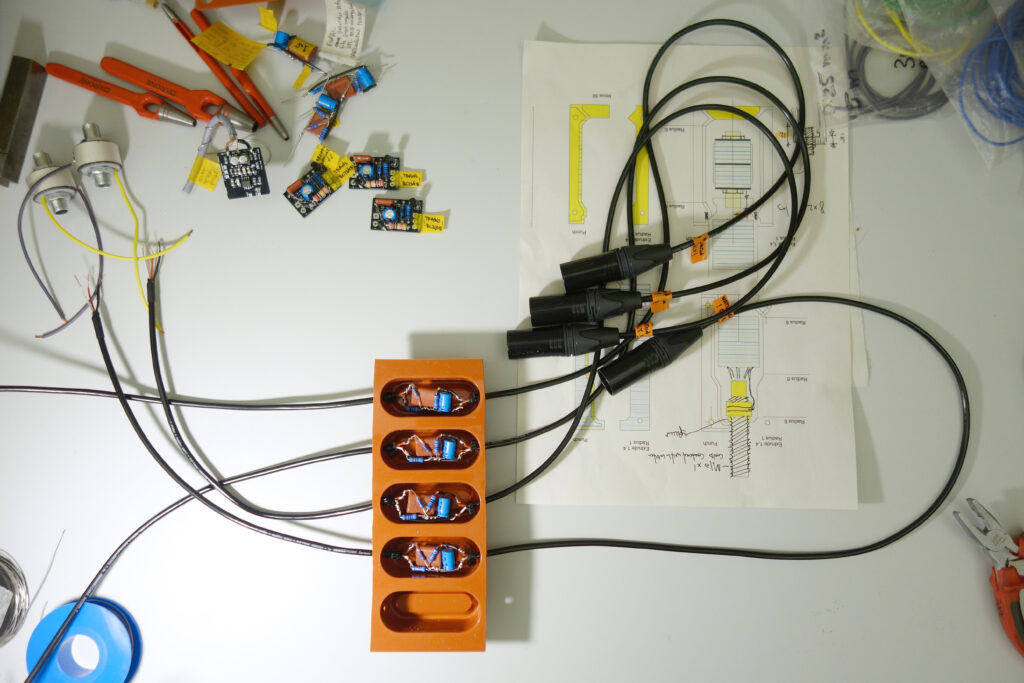
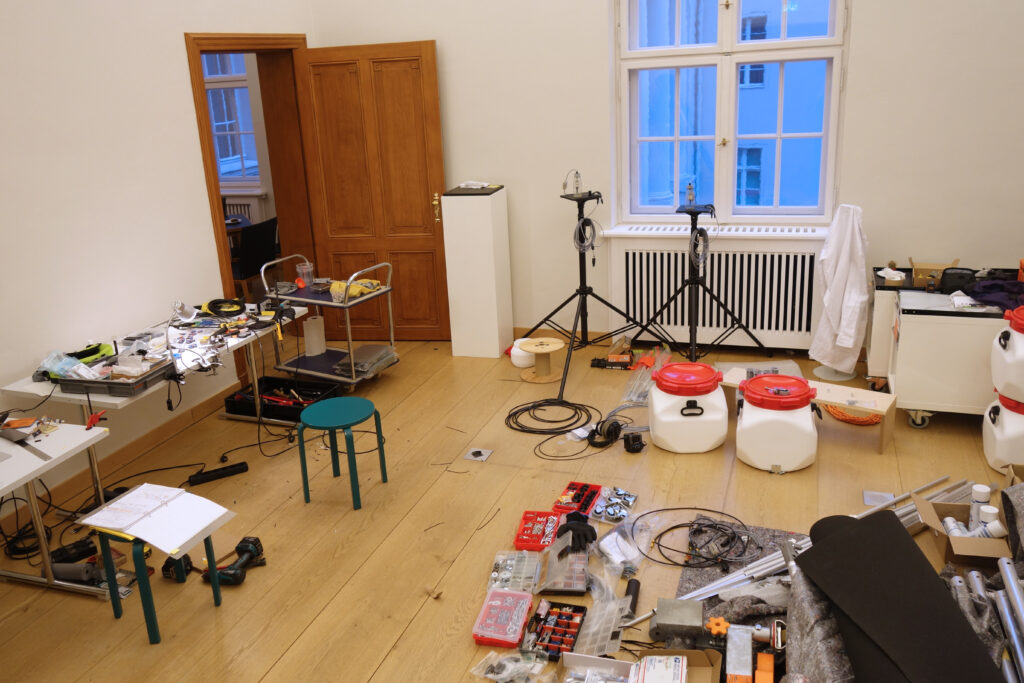
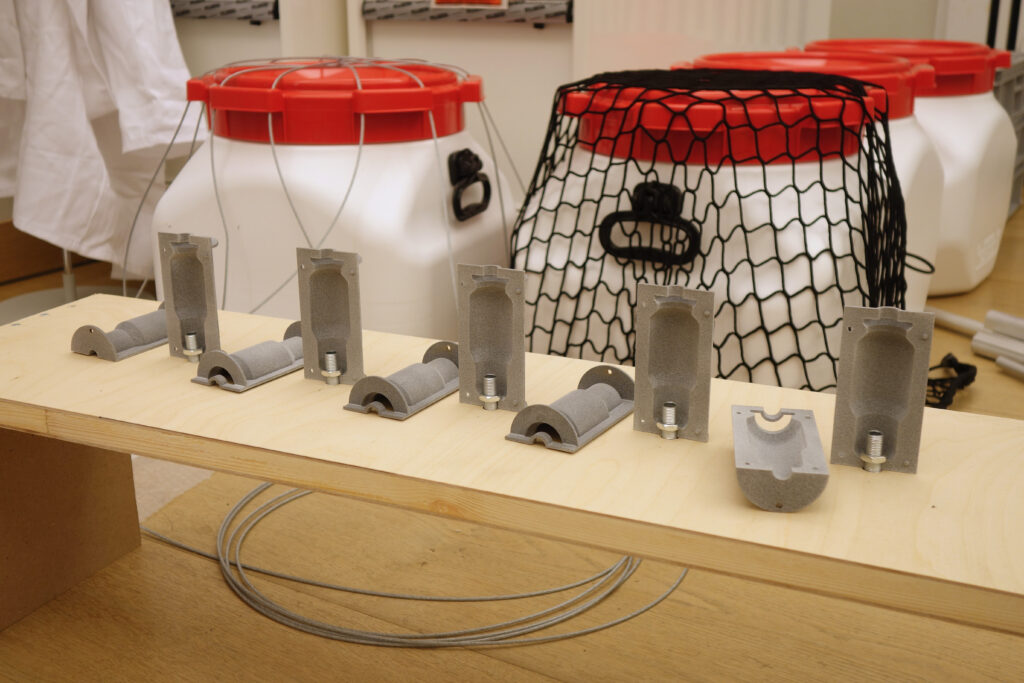

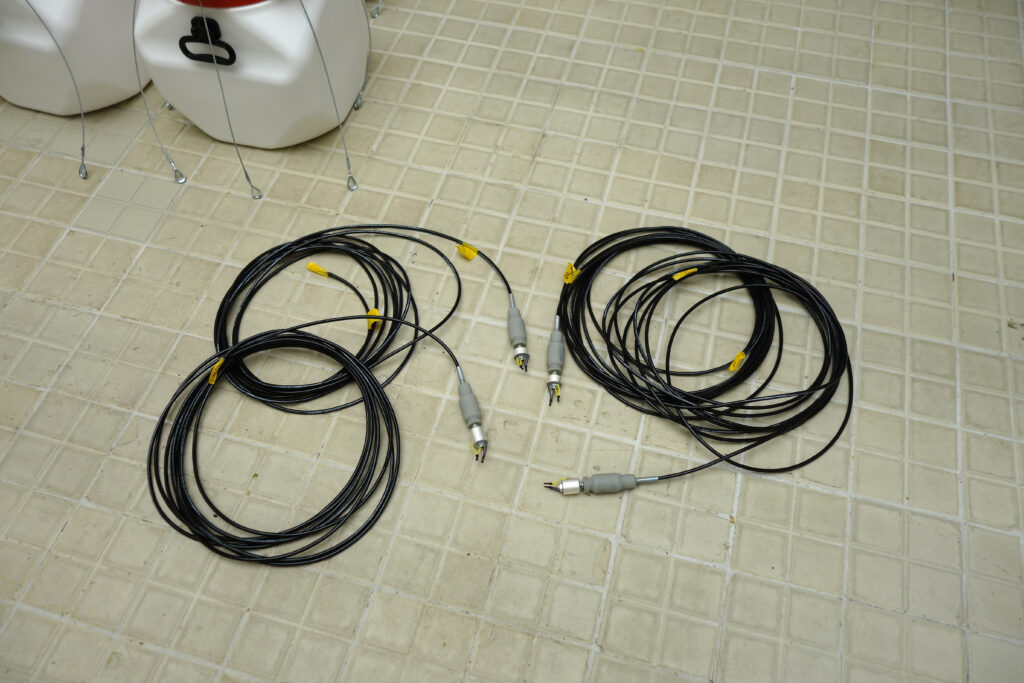
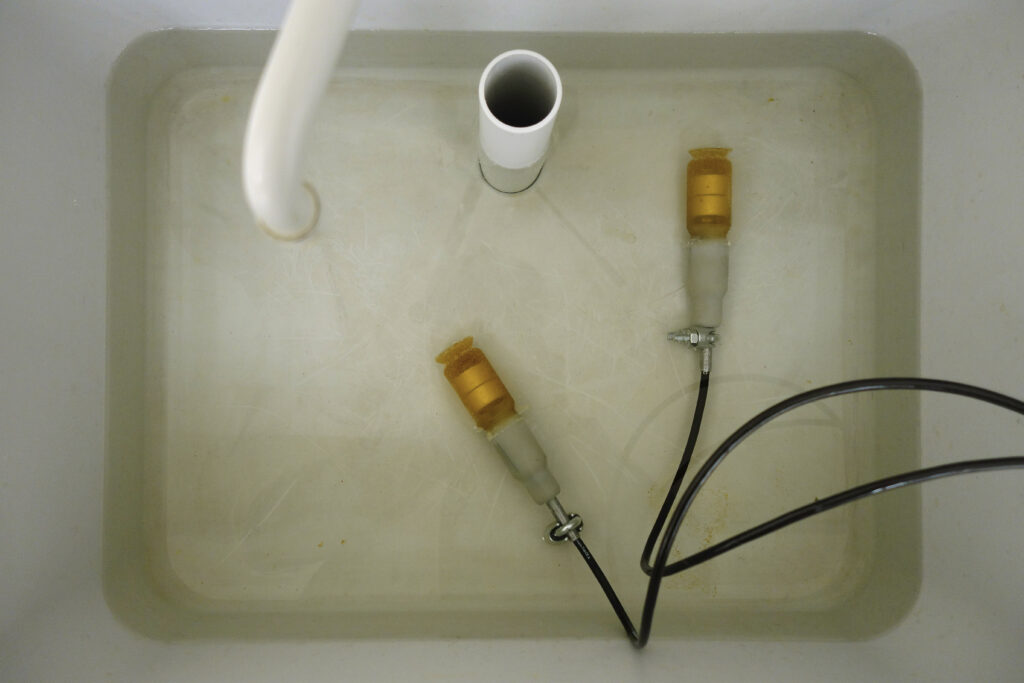
Ocean Current Tethered Hydrophone Array (OCTHA): Relational Ambience Monitoring in the Straights of Magellan
Experimental spatial ambiance hydrophone recordings with unmoored GPS tracked buoys, monitoring relations between baleen whales and the underwater acoustic environment at marine mammal austral summer feeding grounds in Francisco Coloane Marine Park. Historically responsive circuitry and piezoelectric hydrophone construction completed between December 2024 and January 2025 in TA T (Tieranatomisches Theater) and the Objektlabor at the Hermann von Helmholtz-Zentrum für Kulturtechnik, Humboldt University.
OCTHA in the Straits of Magellan
First impressions of the OCTHA system (Ocean Current Tethered Hydrophone Array) operating in the Straits of Magellan and the Tierra del Fuego archipelago between January 21 – 25, 2025. The monitoring system was tested in various locations, of varying depth and underwater topography, with shifting current and wind conditions and across a range of diurnal rhythms. Cetacean activity was present throughout the recordings. An initial sampling of the recordings indicates humpback, austral dolphin and other marine mammal sonic activity, confirming that vocalizations of baleen whales also occur in austral feeding grounds and not merely in equatorial breeding grounds. The hydrophone technique clearly conveys heightened acoustic responsiveness of the underwater fjord topography to the cetacean vocalizations. Further investigation is required to correlate bathymetric conditions with vocalization activity.
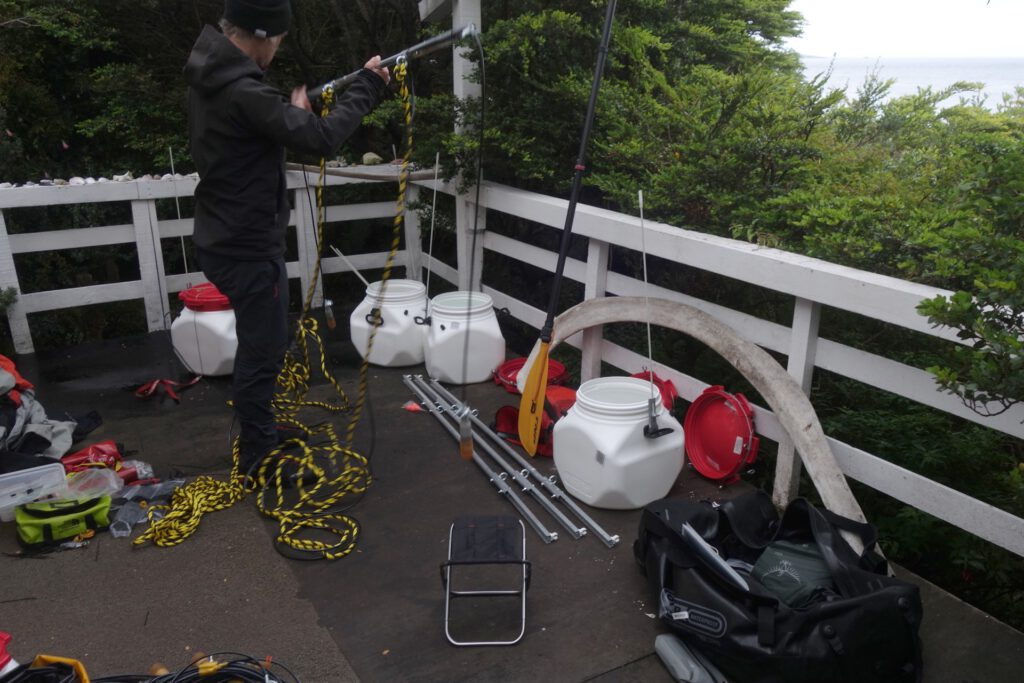
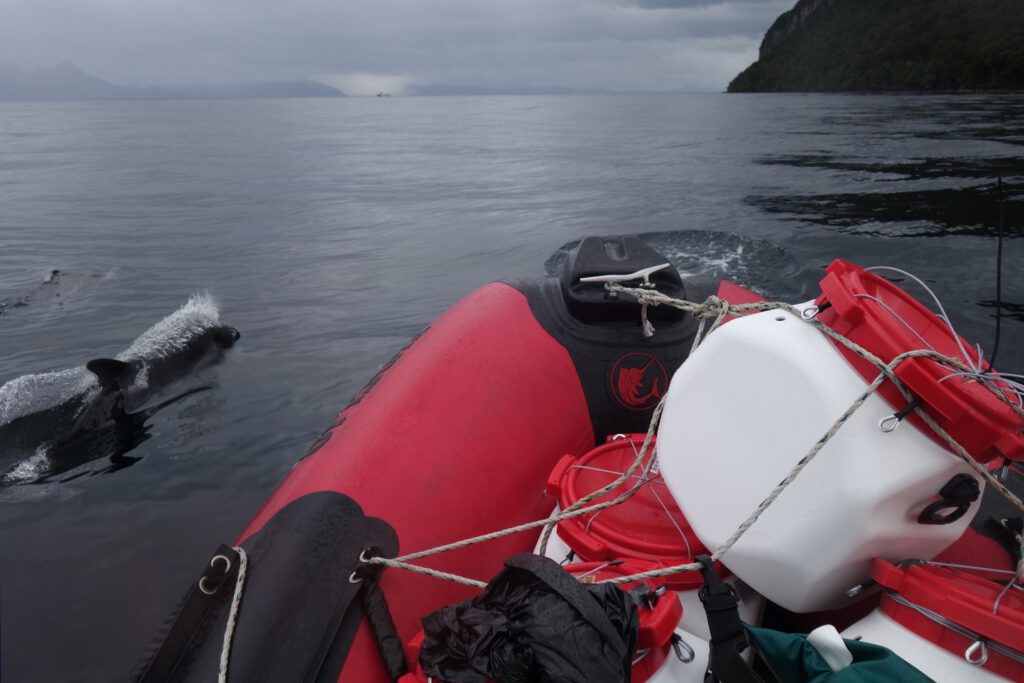
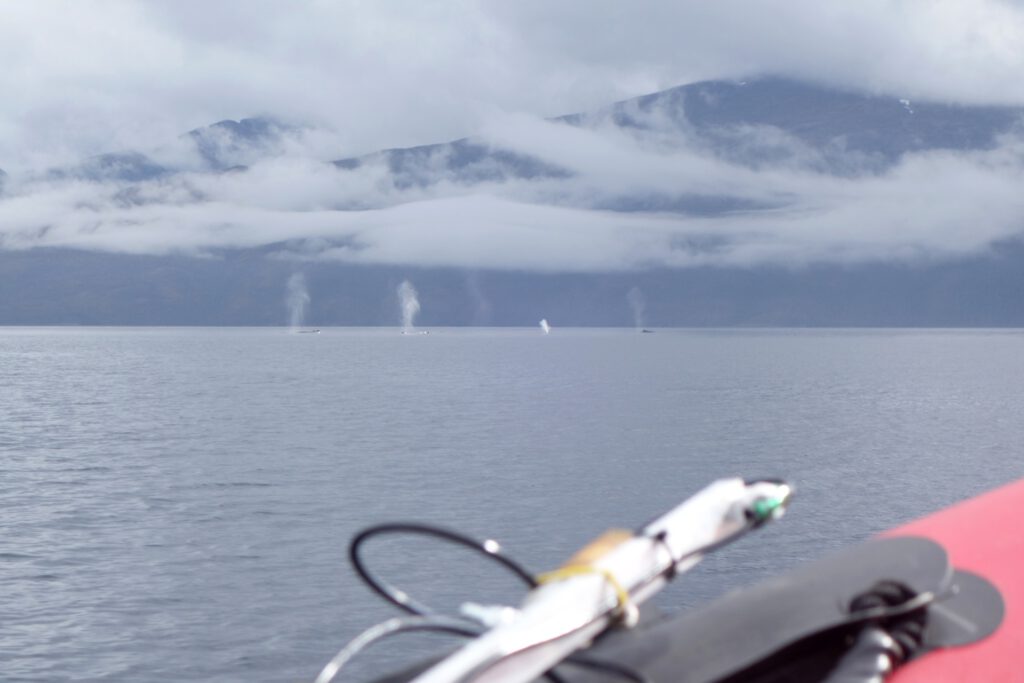
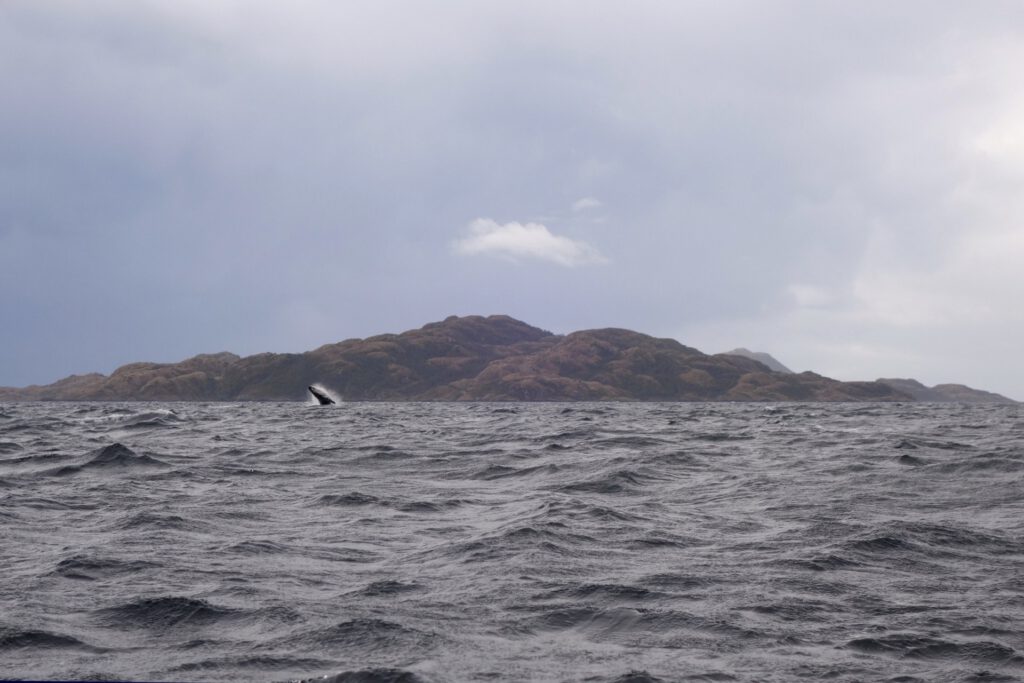
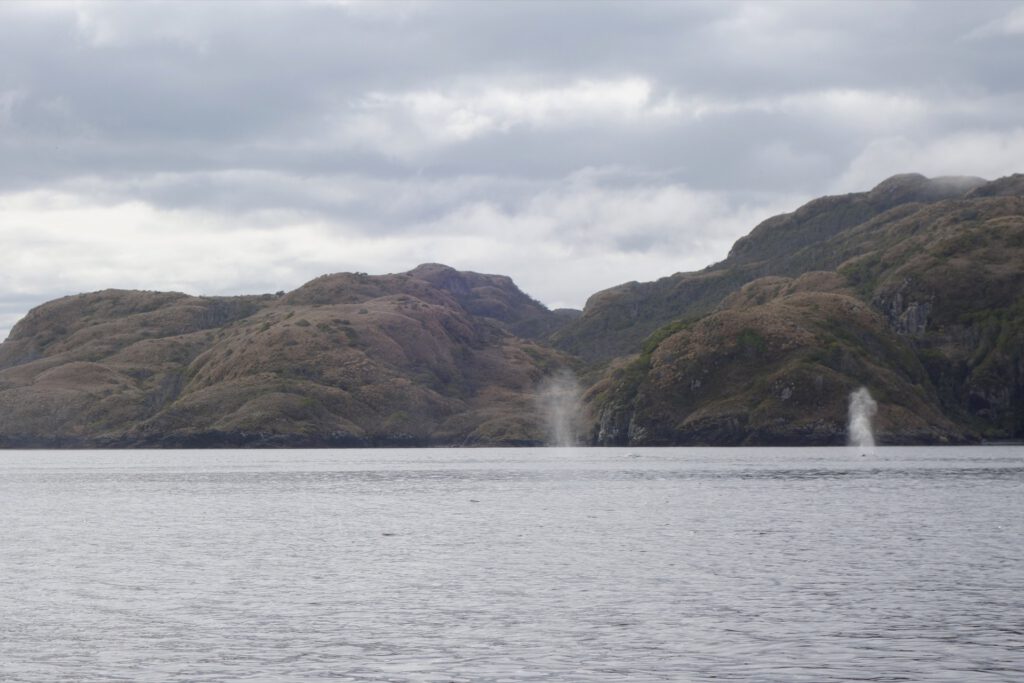
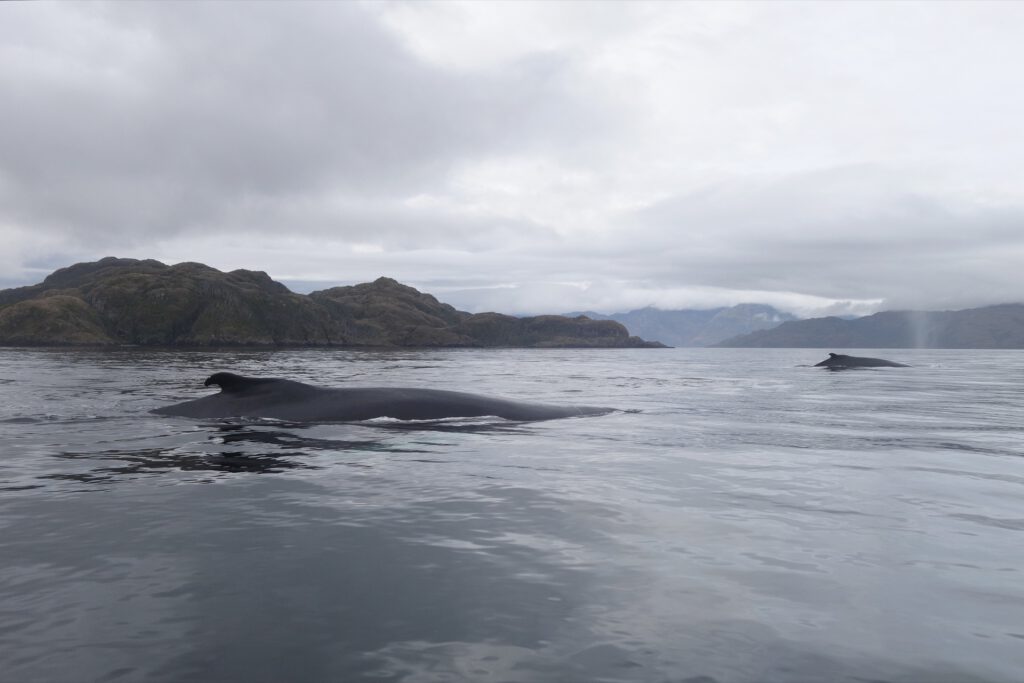

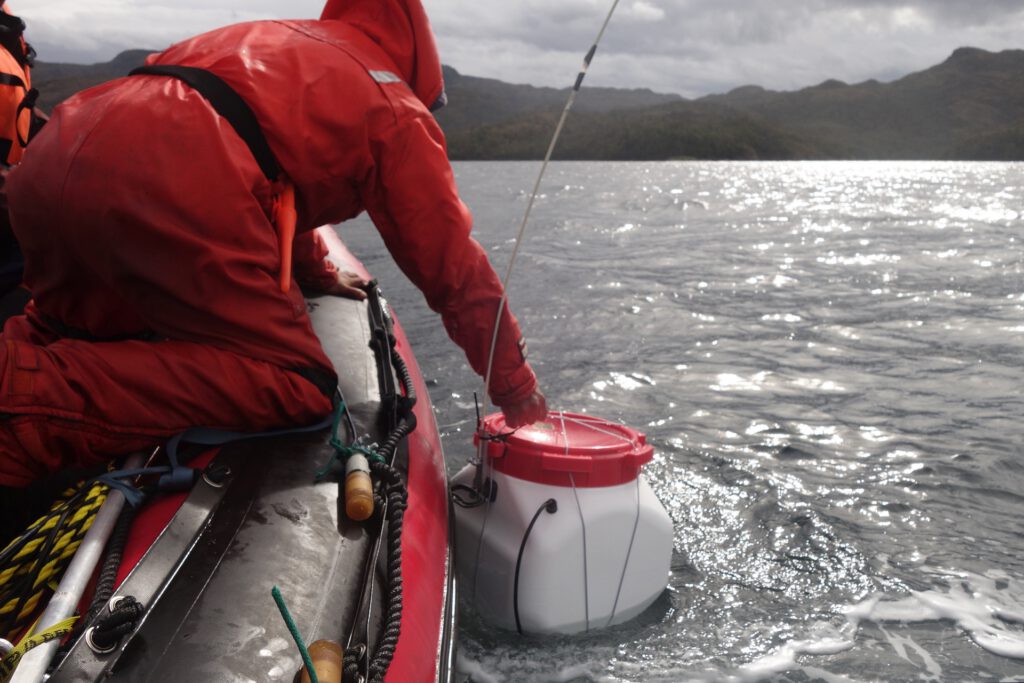

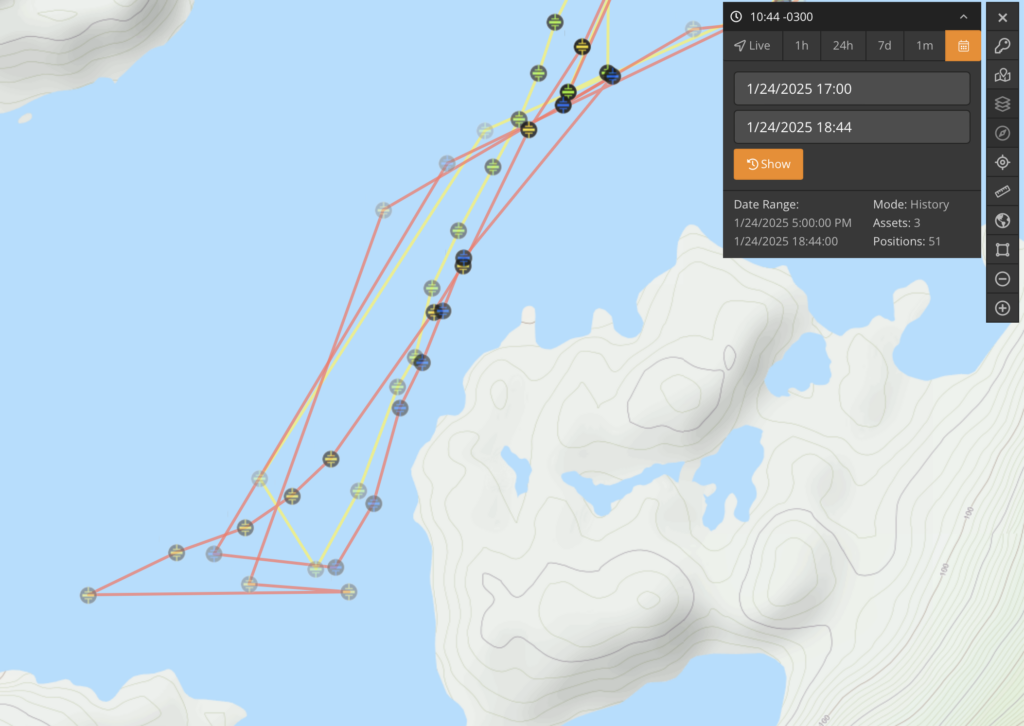

Ocean Spectrum
Analysis of the recordings is currently underway. However the many hours of multi-channel audio collected, from various positions and across a range of topographies, will require careful listening and cross-referencing before conclusions are ascertained. Updates will be added periodically to this page as the research unfolds.
Initial impressions humpback vocalizations include a broad range of calls spanning rhythmic gurgles, groans, grunts, croaks, belches, whistles, squeals and pitched frequency sweeps. One particularly clear recording documenting vocal interactions of an adult and calf in a Magallanes channel demonstrate the agency of sound spectrums as vehicles of spatial interactions. The sharp punctuated calls of the calf — seemingly timed to reverberations of the underwater topography — repeat in altering pitched-sweeps. Spaced at approximately 6-second intervals, the gaps mirror the time it takes for the squeaks to disappear from audibility, indicating whales may be attentive to interactions of their vocalizations with the underwater topography.
When monitoring over headphones, echo reflections from the calf seemingly last longer, with audible reverberation times upwards of 5 seconds (especially in the 2.5 – 6 kHz range), compared with adult vocalizations that last approximately 3.5 seconds. However upon analysis of the audio spectrum, a fundamental frequency in the adult vocalization (around 300 Hz) is observed lasting just as long, its lower frequency range apparently falling out of human auditory attentions. Low-frequency gurgle calls display a clear double echo, likely reflecting off prominent rock features such as islands and shoreline concavities of the archipelago. Possibly the most spatially responsive calls are the pitched frequency-sweeps that set the channel ringing for numerous seconds. Underwater sounds travel more than 4 times faster than in air. For sounds to sustain for 5 seconds in seawater means the signal propagated, and remained audible, more than 7 km distance. These long-distance and reverberant sustain features could be crucial for keeping pod members in contact with one another over distances and around obstacles, while foraging in the scattered archipelago.

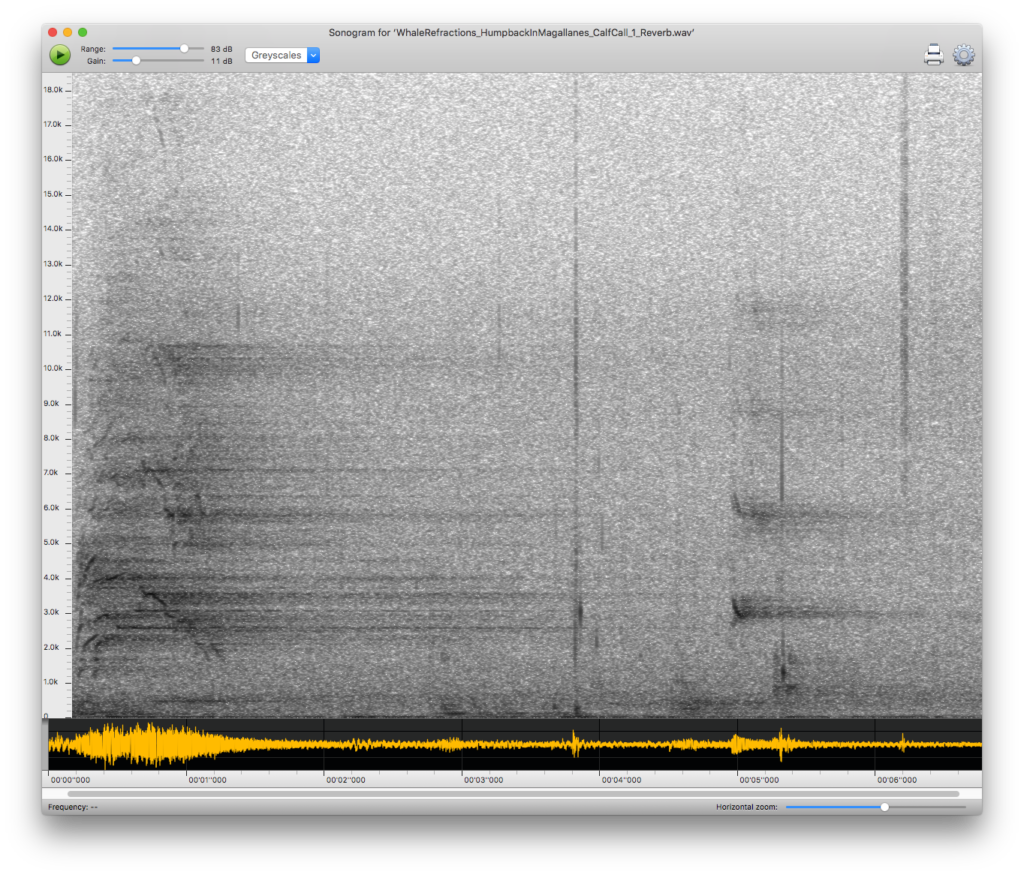
Whales in Fuegian Cultures
Human-cetacean relations in Magallanes extend to prehistory, evidenced in the aoea whalebone harpoon (aoea is the Yahgan name for the single-pronged harpoon variant) discovered on Navarino Island, dating to 7000 BP, displayed at Yagán Usi Territorial Museum in Puerto Williams. Whales were an integral part of the Fuegian cultures, reflected in Yahgan, Selk’nam and Kawésqar folklore and music, though whales were almost never hunted. Stranded and beached whales were prized rarities. When a beached whale was discovered, a large fire was lit signaling the find. On such occasions, differences were set aside and tribes would congregate for extended feasting lasting several days. What was not directly consumed was butchered and carried off to camp or stored underground or temporarily preserved in inland lagoons. Whalebone remains were fashioned into harpoons and woodworking chisels for bark removal, essential tools for Yahgan and Kawésqar boat making and sustenance.
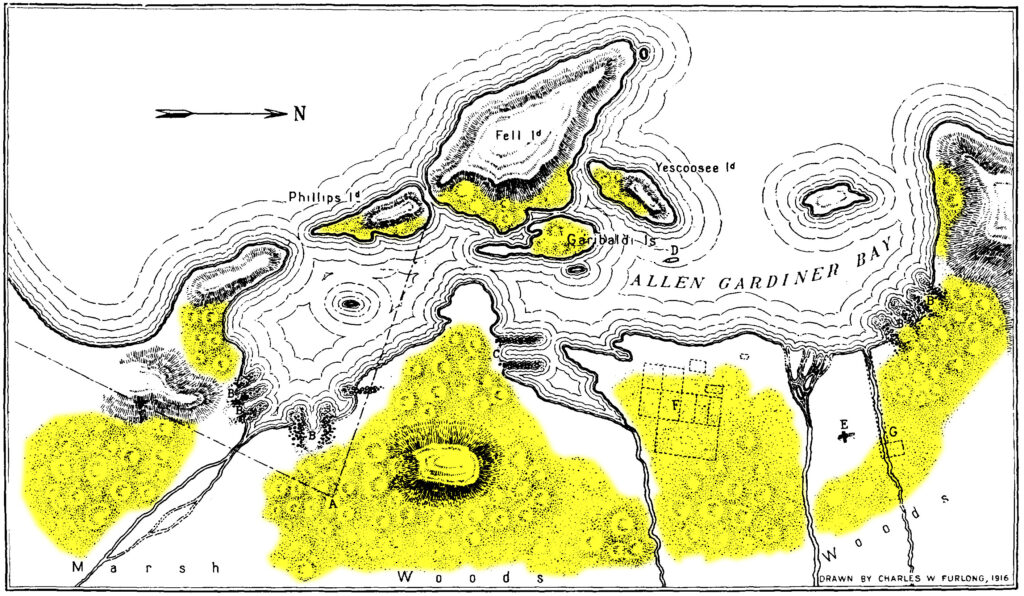
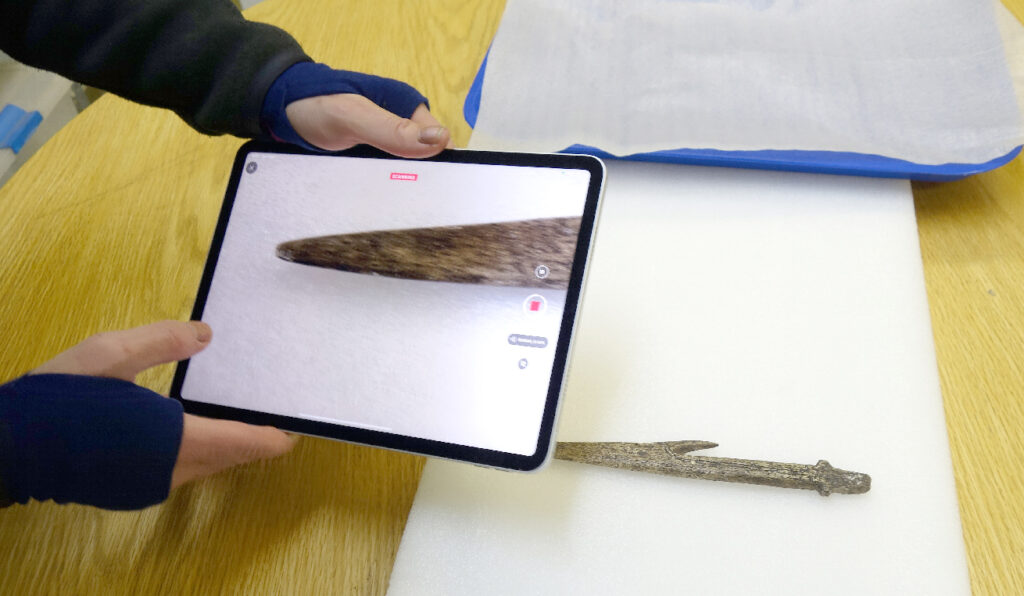
Middens of Wulaia
Although we spotted no whales in the western waters of Navarino Island, whalebone remains were discovered throughout the shell middens all along the coast, especially in the coves to the south of Wulaia where numerous sections contained exposed whale vertebra and ribs. The word ‘midden’ is of Scandinavian origin and related to the Danish mødding ‘muck heap’. Shell middens are distinctive human-made mounds, often occurring along coastlines, consisting primarily of discarded shells of consumed mollusks. Navarino’s west coast variants appear in distinctive half-torus formations, with recessed centers, providing wind protection where native huts once stood.
The midden soil has a distinctive dark-grey hue and waxy demeanor due to an abundance of grease from sea lion and whale fats. Grass and bushes take well to Navarino’s alkaline midden soils, but notably, not the trees. Feral pigs and cattle, abandoned by settlers, can now be found roaming the middens, sheltering in recesses from the wind or rummaging through layers of history at times piled five meters high. Whalebone identification, combined with dating analysis, could provide an extended durational impression of whale species fluctuations — cetacean oscillations — around the Beagle Channel.

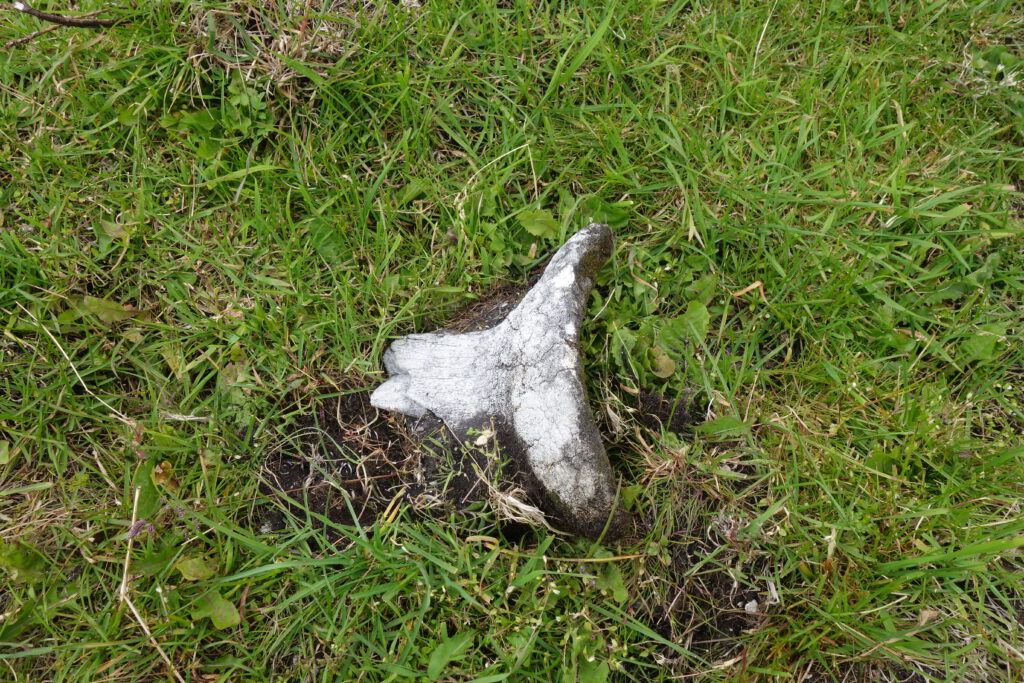

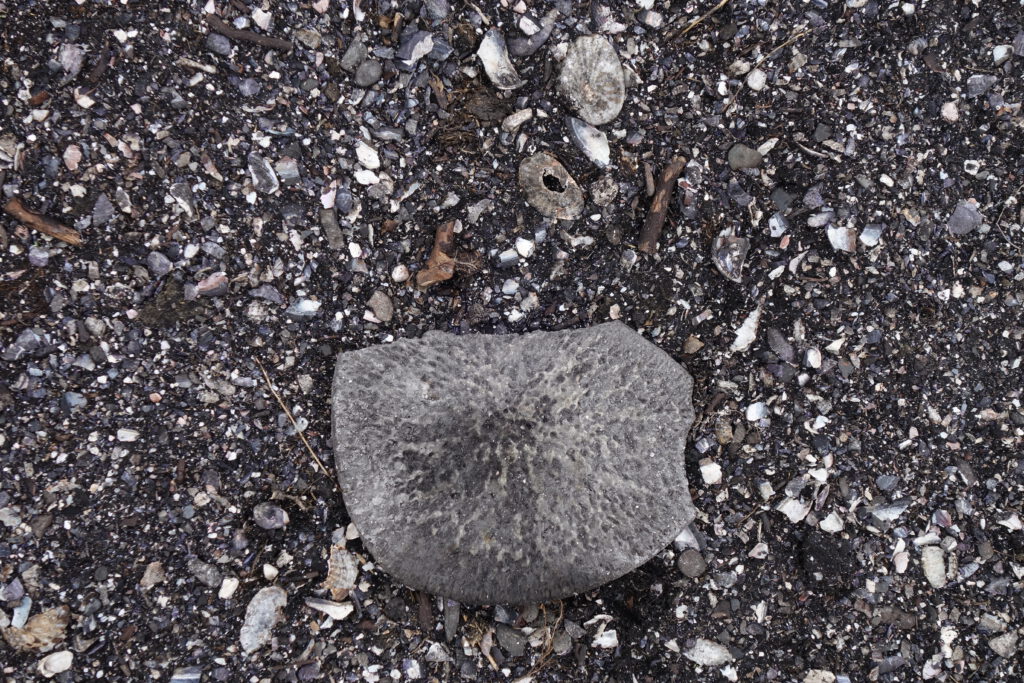

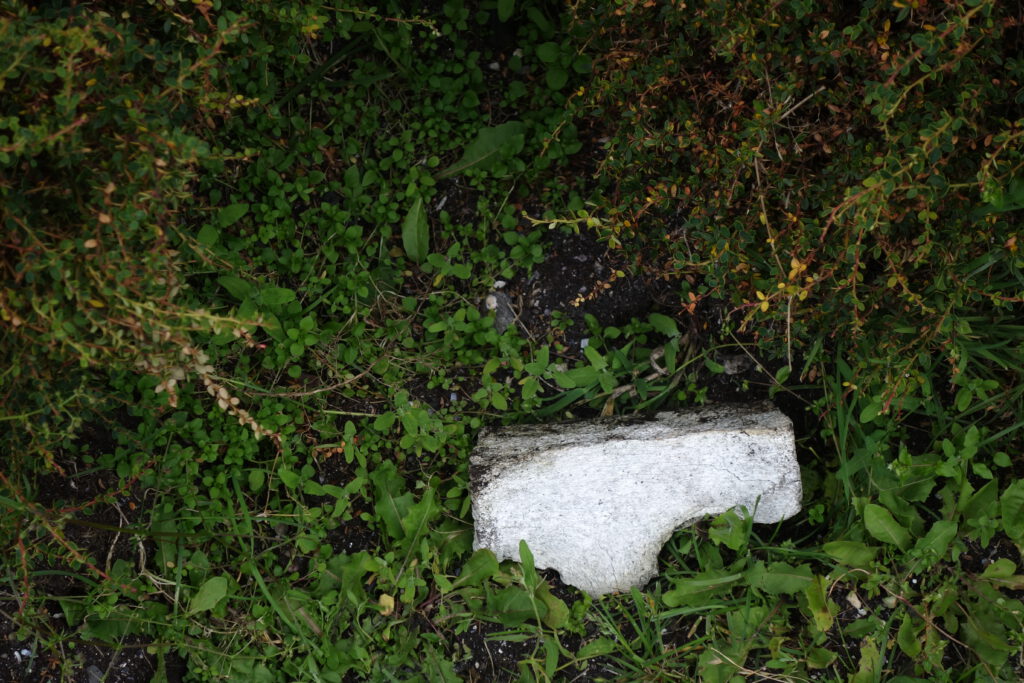
The research was supported by a fellowship during [2024/25] at the Käte Hamburger Kolleg inherit.heritage in transformation at the Humboldt-Universität zu Berlin, which is funded by the Federal Ministry of Education and Research.

TA T (Tieranatomische Theater), Objekt Labor, Humboldt University, Berlin

Logistics and archipelago access in collaboration with Whale Sound, Punta Arenas / Carlos III.

